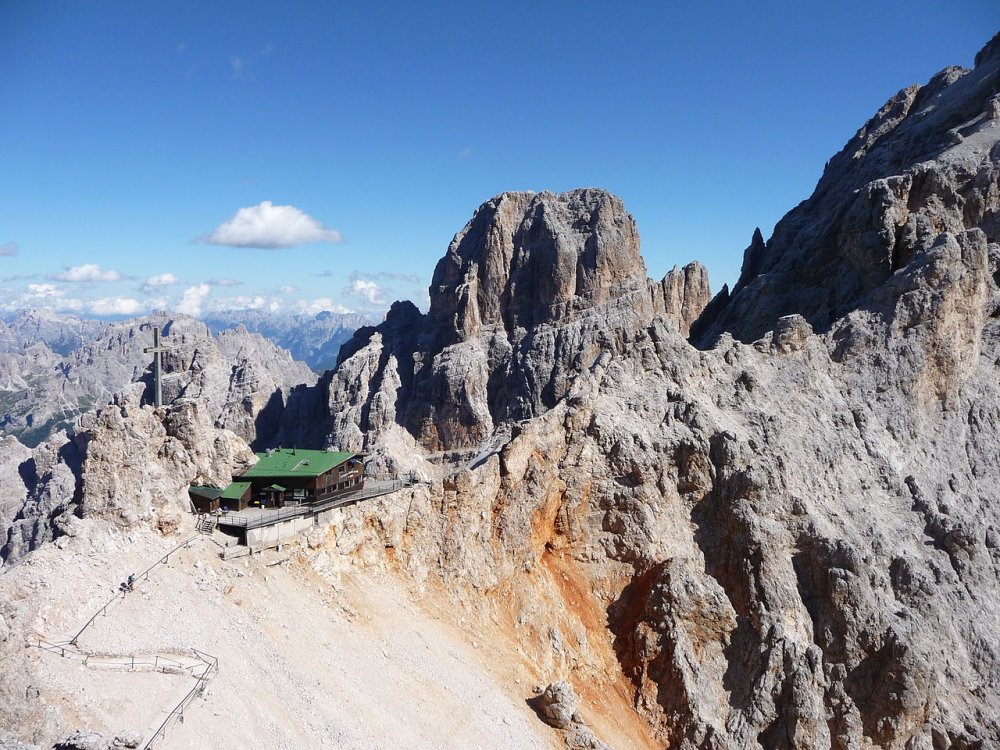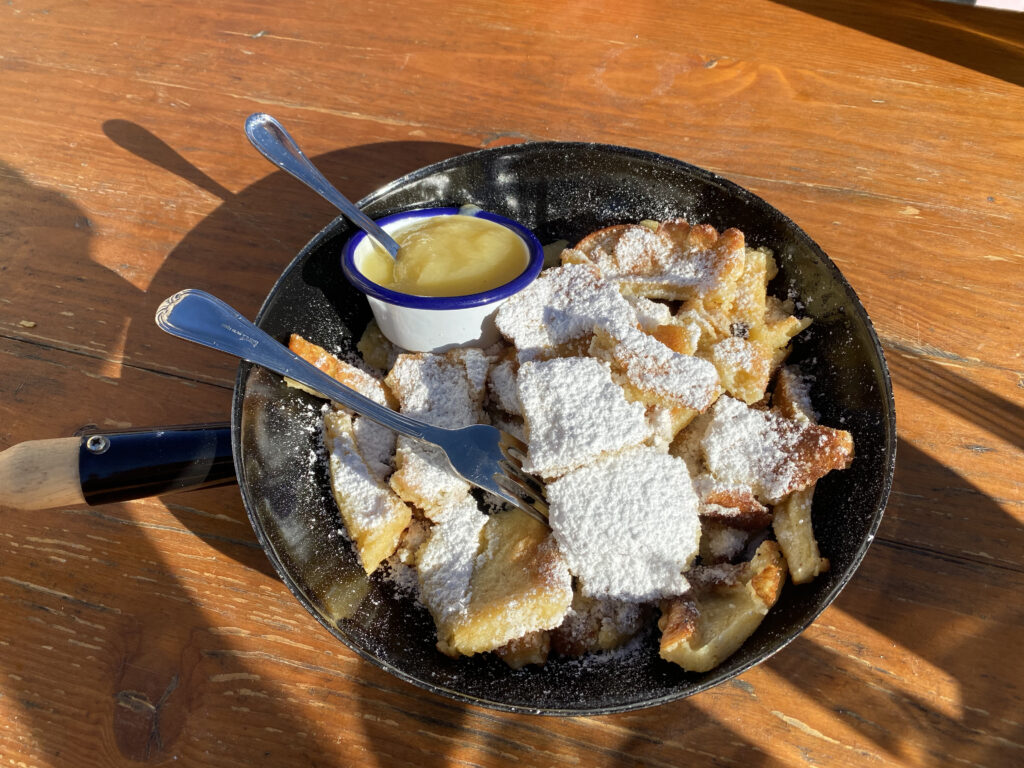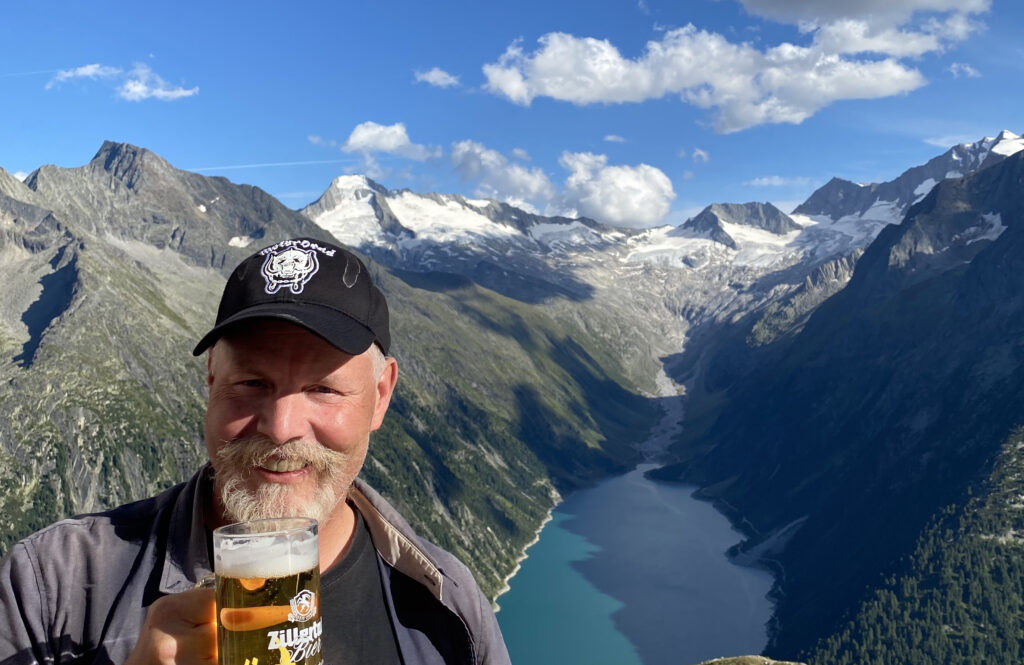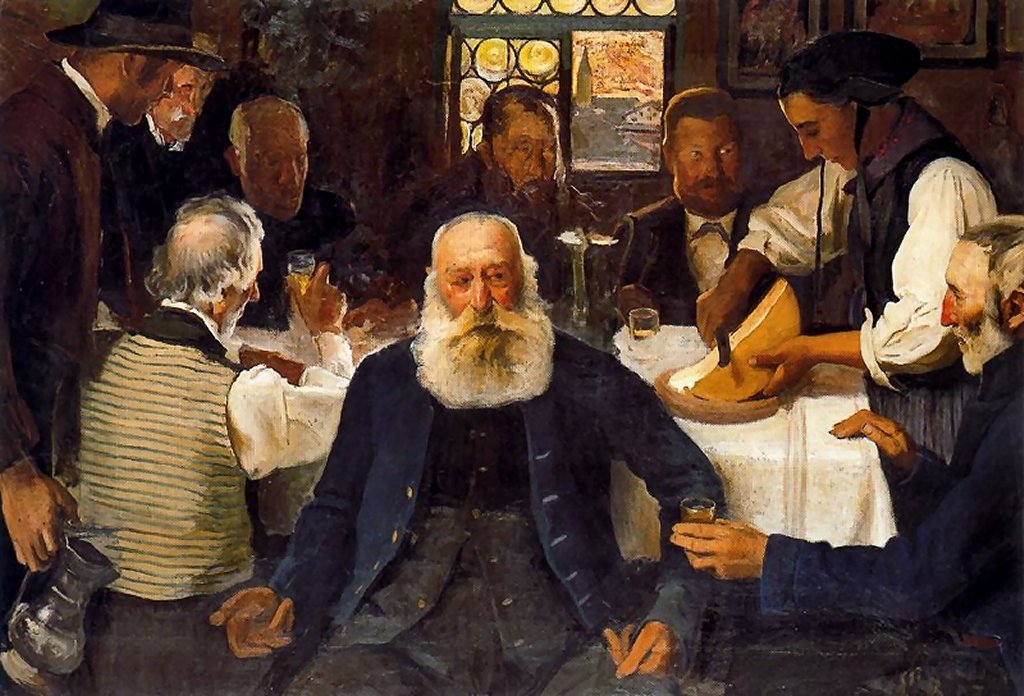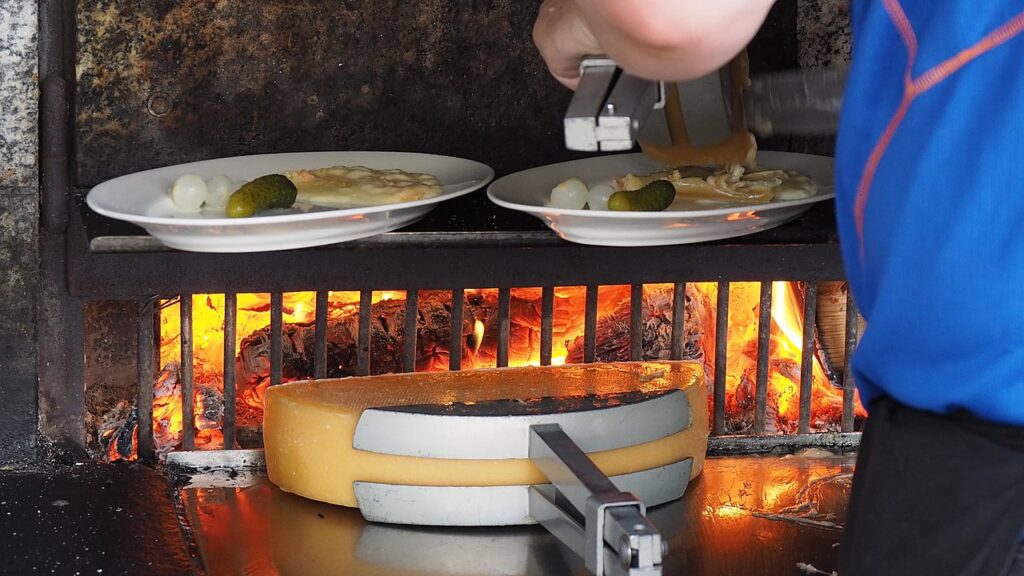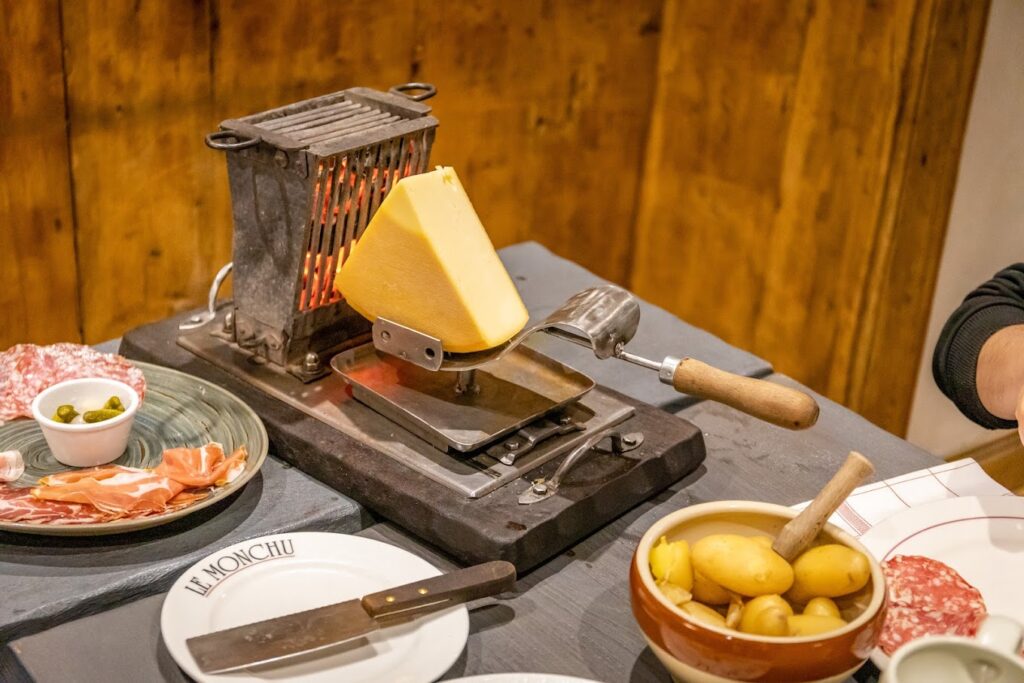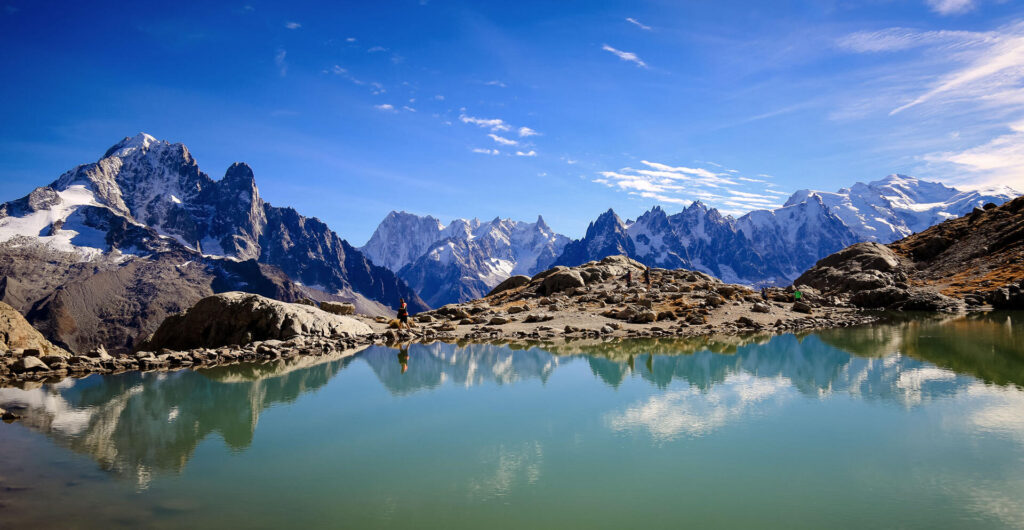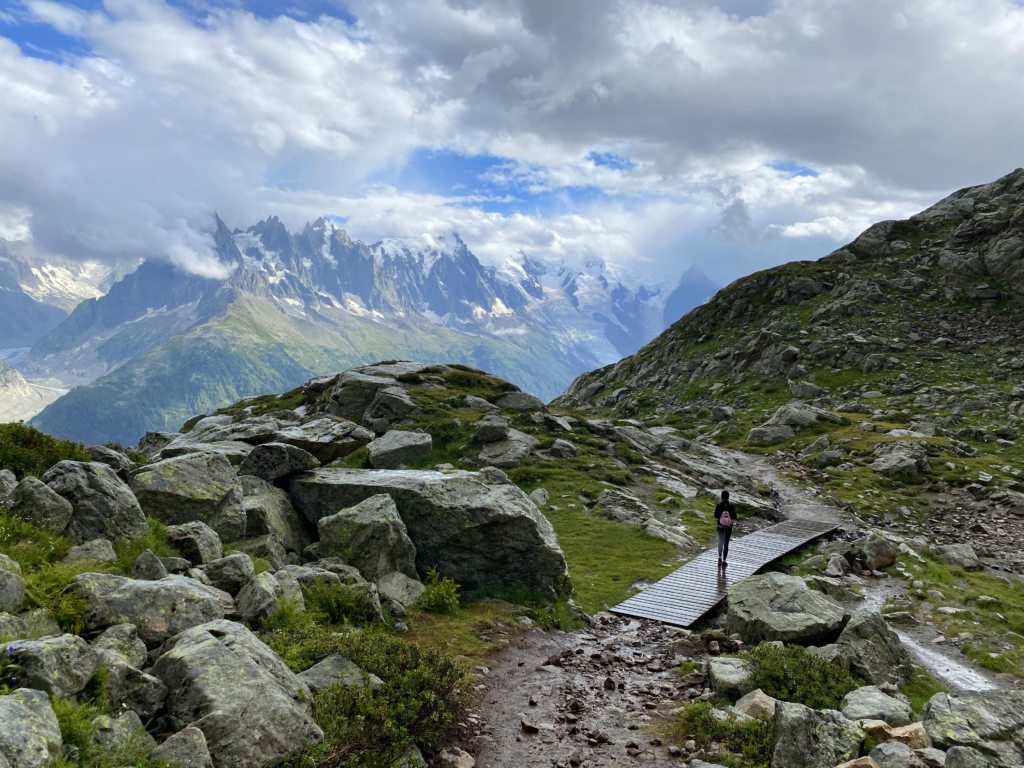Olpererhütte – The Very Best of the Alps
One of the best things about hiking in Europe’s Alps is the amazing network of alpine huts (“refuge” in French, “rifugio” in Italian, “hütte” in German). Hikers can set out on most any trail and somewhere along the way there will be a hut where they can rest, get a meal or a cup of coffee, and in some cases stay the night if they wish. These aren’t just mountain resorts that you can drive up to like we’re used to in North America – these are literal places of refuge high in the alpine that are only accessible by hiking (or skiing in the winter). Some of them are so rugged they can only receive their supplies by pack animals or helicopter!

The very rugged Rifugio Monte Cristallo was built during WW I into the side of the mountain and is still used by climbers today.
One of my favourites is the Olpererhütte in Austria’s Zillertall, which is why I’ve included it in our Very Best of the Alps Tour. The scenic suspension bridge behind the refuge will make you stop for a photo, guaranteed! And then you can rest your feet and satiate your hunger and thirst at the refuge’s excellent restaurant, with fine views over Lake Schlegeisspeicher.
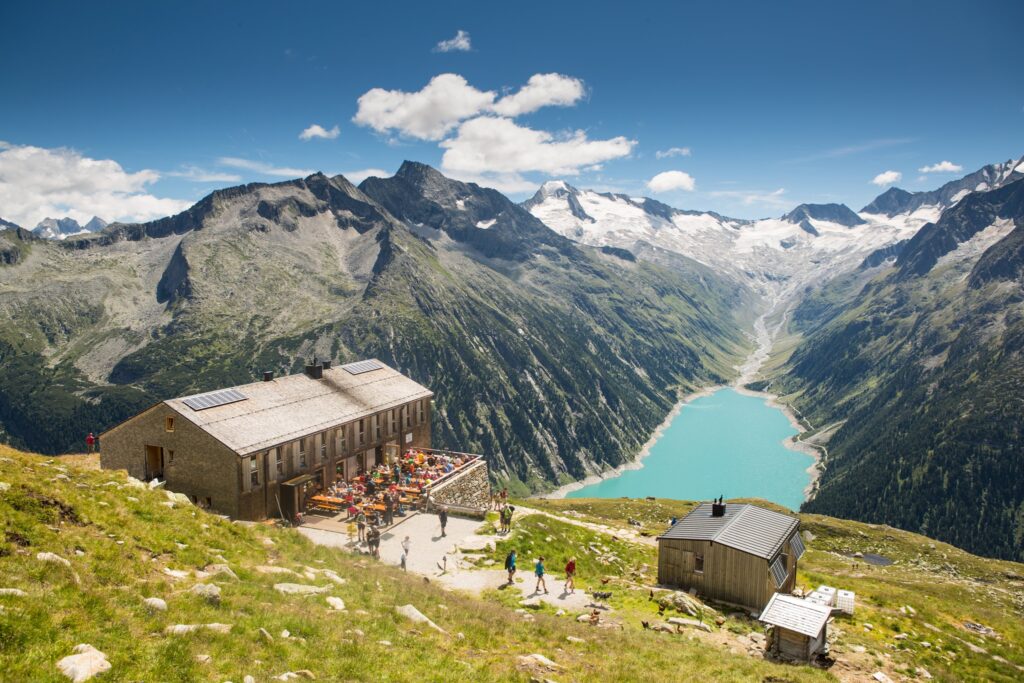
Olpererhütte – originally opened in 1881 as a simple shelter, it is now a full restaurant offering accommodations to backpackers.

